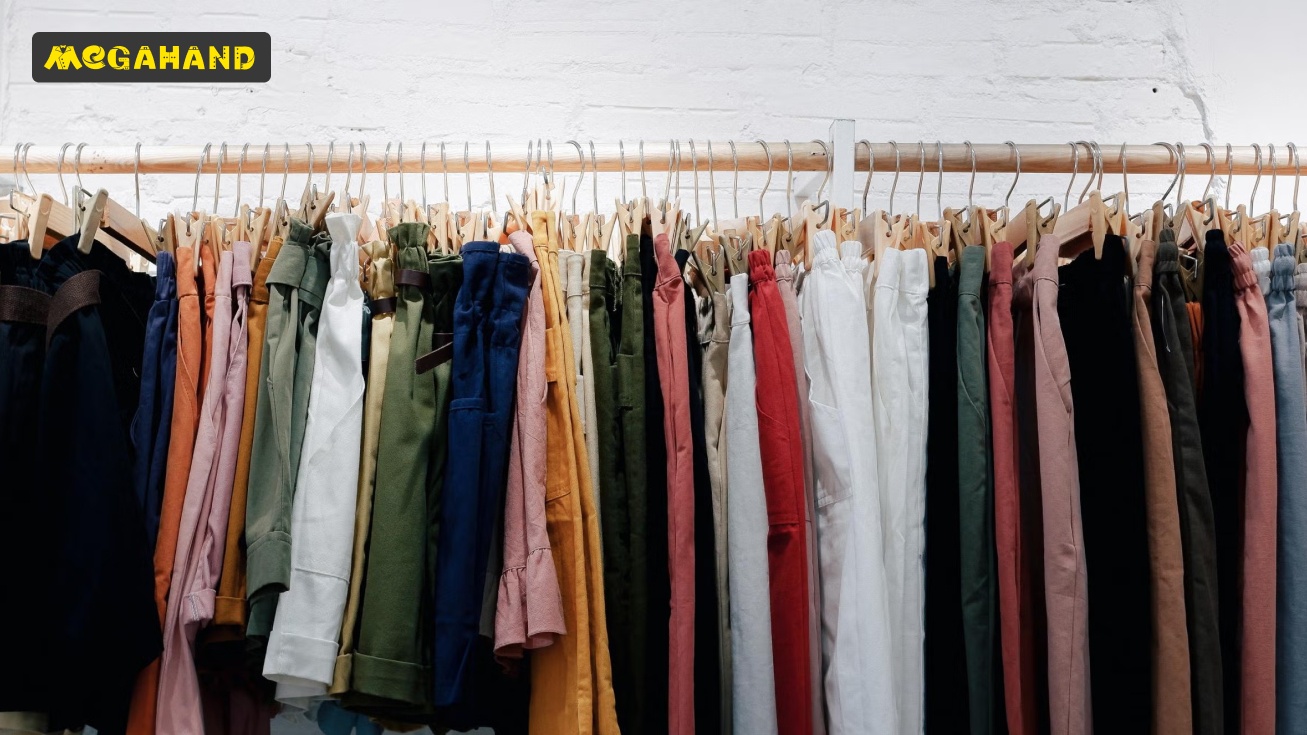In the world of shopping, there are many terms that are sometimes confusing: second-hand, stock, outlet. At first glance, it may seem that these are the same thing - places where you can buy clothes and shoes at discounted prices. However, there are significant differences between them. Understanding these differences will help you make more informed choices and find exactly what you need at the best price.
What is a Second Hand Store?
Second Hand Stores (literally “second hands”) are stores that sell used clothing, shoes, accessories and other goods. The basic idea is that items that have already been worn or used by someone are given a second life. Second-hand clothing comes from various sources: from individuals (clothing collection), charitable organizations or through specialized companies involved in collection and sorting.
Key features of second-hand clothing:
- Condition: Items can be in different conditions - from almost new to heavily worn. Quality depends on sorting.
- Price: As a rule, the lowest compared to stock and outlet. The price is often determined per kilogram of weight or fixed for each item.
- Uniqueness:In a second-hand store you can find truly unique vintage items or rare models that are no longer sold in regular stores.
- Assortment:Extremely diverse and unpredictable. Depends on receipts.
Visiting a second-hand store is always a kind of treasure hunt. For example, at Megahand in Rustavi, Georgia, shoppers can find a wide selection of clothing for the whole family at affordable prices, making it a popular place for economical and fun shopping.
What is Stock?
Stock (stock - stock, warehouse) are stores that sell remnants of collections from regular stores, unsold goods from previous seasons, as well as clothing that has not passed the manufacturer’s strict quality control (for example, with minor defects) or intended for specific advertising campaigns or uniforms. Items in stock are new.
Key features of stock:
- Condition: Items are brand new, with tags.
- Price: Lower than the original price in retail stores, but usually higher than in a second-hand store.
- Brands: Well-known ones are often represented brands, but the assortment may be scattered (few sizes, limited models).
- Assortment: Depends on suppliers and their warehouse balances. Collections are usually from last year or from earlier seasons.
Buying in stock is a good way to buy a new branded item at a discount, if you don’t mind that it is not from the latest collection.
What is an Outlet?
Outlet (outlet - retail outlet) are stores owned by the brands themselves or large retailers that sell products from past collections, and sometimes clothing lines specially produced for outlets. Outlets can be located either in separate shopping centers (outlet villages) or exist as online stores.
Key features of the outlet:
- Condition:Items are new, with tags.
- Price:Significantly lower than the original retail price, but often higher than in stock and especially in second-hand stores.
- Brands: Specific brands (mono-brand outlets) or groups of brands (multi-brand outlets) are presented.
- Assortment: Wide selection of models and sizes of specific brands, but from previous seasons. Sometimes they offer collections exclusive to outlets.
Outlets are ideal for those who value specific brands and want to buy their products at a discount, without being tied to the latest trends. Finding high-quality clothes from well-known manufacturers in an outlet is easier than in a stock or second-hand store.
Comparison: Second-hand vs Stock vs Outlet
To better understand the difference, let's consider the main criteria:
You can learn more about the types of stores by studying the history of each format. Each of them offers its own unique consumption model.
Which is more profitable?
The answer to the question “which is more profitable?” depends on your priorities:
- If the main criterion is maximum savings, then second-hand is certainly the leader. Here you can buy a large amount of clothing for minimal money. For example, at Megahand in Rustavi, prices per kilogram make shopping very affordable.
- If you want to buy a new brand item at a discount and are not chasing the latest news, then stock or outlet is your choice. An outlet often offers a more predictable assortment of specific brands, while a stock store is an opportunity to find completely different brands in one place.
- If uniqueness and vintage are important, then only second-hand. Here you can find real gems that cannot be found anywhere else.
- If sustainability and conscious consumption are important, then second-hand also comes out on top, as it gives things a second life and reduces the burden on the environment.
Thus, each shopping format has its own advantages. Second-hand stores, like Megahand in Rustavi, offer the lowest prices and a unique range of used items, promoting sustainable consumption. Stock and outlet provide the opportunity to purchase new branded items at a discount, satisfying demands for quality and brand at a more affordable price than in traditional retail.
Choose the format that best suits your needs, budget and principles.
| Criterion | Second-hand | Stock | Outlet |
|---|---|---|---|
| Product condition | Used (used) | New (remains, unsold) | New (past collections, special lines) |
| Product source | Collection from the population, sorting centers | Remaining retail stores, warehouses, factories | Brands/retailers' own stores |
| Price | Lowest | Below retail, above second-hand | Below retail, often above stock |
| Assortment | Unpredictable, unique, vintage | Scattered, past seasons, different brands | Systematized, past seasons, specific brands |
| Tags available | Rarely | Always | Always |


